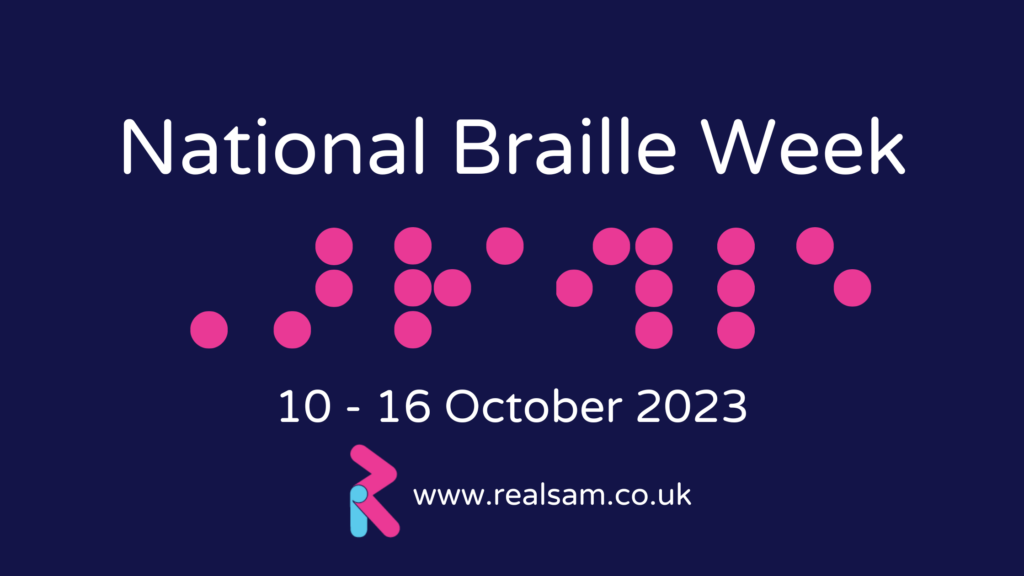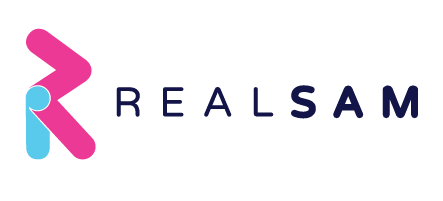Imagine not being able to jot down your thoughts, read a book, or write to a friend. Before Braille, this was the reality for blind and partially sighted people around the world.
The 10th – 16th October is National Braille Week. National Braille Week is the perfect opportunity to celebrate the development of Braille and the tremendous positive impact it continues to have on the sight loss community.
Braille was Revolutionary
Braille is not a language, it’s a form of writing. It uses patterns of raised dots to represent characters that can be read by people who are blind or visually impaired.
Did you know that the invention of Braille was inspired by the military? In 1819 Charlse Barbier, a former officer from the French army came up with ‘night writing’ so that soldiers could communicate in the dark without speaking.
It was a time of exciting change for France, a country that had just gone through a revolution. Barbier was passionate about creating different ways for people to write and communicate. One thing that was of great concern to him was the lack of literacy and general education in the country. After coming up with a tactile shorthand he called sonography, he shared his system and the tools he used with the Royal National Institute for Blind Youth in Paris.
The students in the school were taught to read using embossed types. This was very challenging. For one thing, they were using cursive, and similar characters like, ‘C’s, ‘A’s, and ‘O’s were difficult to decern by touch. Additionally, few words fit in a page making it incredibly expensive to reproduce large bodies of text, much more entire books. The school had limited materials for the students, nevertheless they learned the mechanics of reading and spelling.
The one thing the students were unable to do was write for themselves. Embossed texts were produced by machines and could not be handwritten. Some even learned to write using a pencil even though they themselves would not be able to read what they’ve written. This was the case until Louis Braille developed the basics of what we know as Braille today. For the first time ever, a blind person had the ability to really read and write independently—it was life changing!
Louis Braille
Louis Braille, 1809-1852, became blinded at the age of three when he was playing in his father’s harness shop. An awl, a sharp tool used for punching holes in leather, severely punctured his right eye. He developed an infection that spread to both eyes and caused him to lose all his vision by the age of 5.
Despite the horrific accident, Louis was a bright student who excelled in music. He received a scholarship to attend the Royal National Institute for Blind Youth in Paris. This school was originally a hospital and rehabilitation institution for blind veterans. He was a teenage student when he began to work on completely adapting Barbier’s ‘night writing’ for himself and the other students in the school.
Barbier’s code was based on 12 dotted cells. The different patterns of raised dots could represent alphabetical characters or phonetic sounds. Louis Braille was 15 years old when transformed the system to be based on 6 dotted cells so that every character can be easily identified with one touch. At the age of 21 he published his system, then continued to work on it so that it could also be used for music and math.
Braille in our Digital Age
Braille has been around for 200 years. Changes have been made over time and different countries have made adaptations to fit their language structures. For the most part though, it remains as Louis Braille first invented it.
For a long time, using a slate and stylus was the main way to write Braille. Technology has caught up. From the Perkins Brailler developed in the 1930s to all the different Braille displays and Braille keyboard inputs in the market today, people are using Braille to interact with their computers and mobile devices.
Today not every blind person can read Braille. Some may even believe that with all the technology we have Braille is no longer relevant. Yet in a world of screen readers, smartphones, and accessibility AI, Braille literacy still has a positive impact. In fact, research shows if you know how to read and write Braille, you are more likely to be employed as a blind person.
Screen readers and accessibility AI are assistive technology that are essential and extremely helpful in providing vital information for someone who is blind or has low vision. But not everything can be accomplished efficiently by using audio only. Braille is critical in learning sentence structures, grammar, spelling, math, and music.
Listening to audiobooks can be very satisfying, but being able to read text without anyone reading it for you is empowering. As a blind parent or family member, you could read to younger children using Braille books. Reading Braille labels on important everyday items like medicines and food packages requires no additional devices. Braille in public spaces like elevators, transportation stations, room numbers, etc. helps blind people navigate.
Braille is useful in the workplace. For example, customer service professionals can use Braille displays to read a lot of information quickly versus listening to the screen reader and the customer simultaneously. Braille would be helpful to a visually impaired teacher or someone who needs to read notes during a speech. Using Braille in combination with embossed images, charts, and graphs, that would be difficult to express via audio, can provide insight to a low vision professional who needs to analyse data.
Participate in National Braille Week
Above are just a few examples, but there are countless scenarios where Braille literacy makes a big difference to someone’s independence. By participating in National Braille Week, you can be part of spreading awareness that can change someone’s life.
During National Braille Week, learn more about Braille and share this RealSAM article with someone who may want to know about Braille and the sight loss community.
By Guenivir Kendrick




